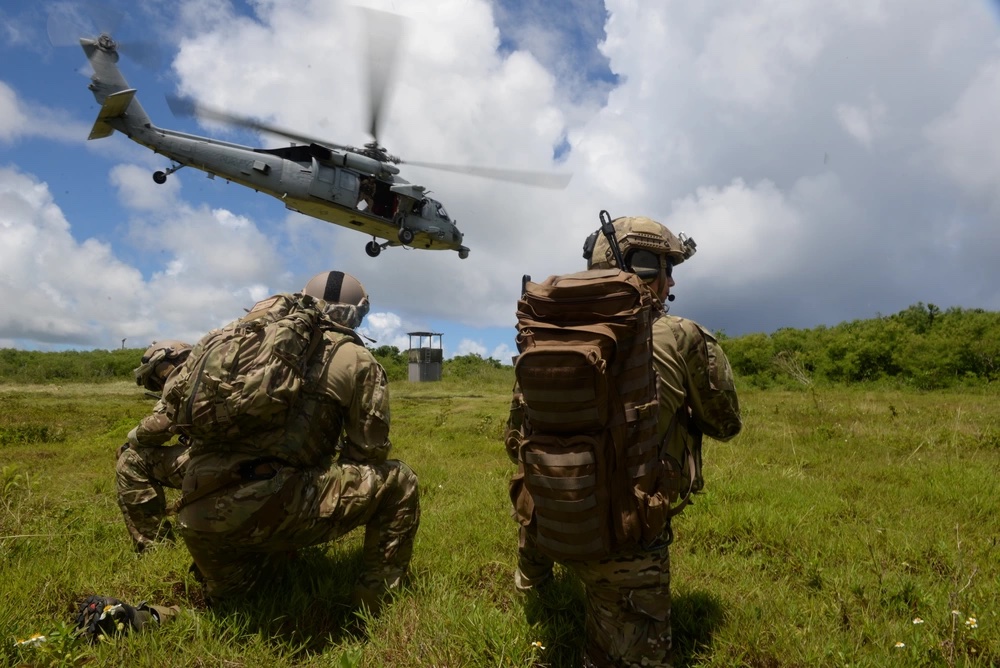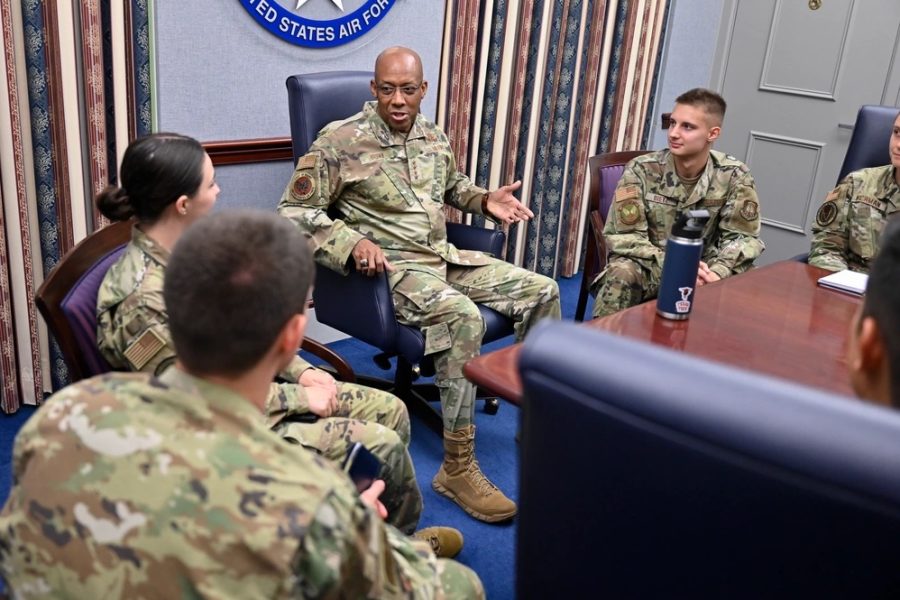The Air Force’s success in a future conflict will depend on “clear communication of intent, shared understanding, trust, and empowerment,” Chief of Staff Gen. Charles Q. Brown Jr. wrote in an Aug. 16 memo to the force. The memo accompanied a new Air Force doctrine publication on mission command that Brown hopes will help leaders understand how to empower subordinates to make decisions, a skill he believes will be essential in a possible future conflict where units may find themselves isolated from command.
“Though the USAF doctrine has historically focused on decentralized execution, the operational environment the last few decades have instead typified centralization at all levels,” the new doctrine publication states. “However, future contested, degraded, or operationally limited environments may impede these efficiencies, necessitating a pivot towards decentralization.”
The memo and doctrine come at a time when the Air Force is preparing for a possible future conflict against China in the Pacific, where vast distances, robust anti-aircraft weapons, and signal jamming could force units to act with greater autonomy. One of the tenets of that shift is Agile Combat Employment (ACE), the operating concept in which Airmen and aircraft disperse from a central base to smaller, more austere locations in order to complicate an adversary’s targeting.
For concepts like ACE to work, however, Airmen need to be well-versed in the principle of “mission command,” whereby Airmen are empowered to make their own decisions in line with their commander’s intent in an uncertain, complex environment.
“Armed with shared understanding, subordinates can make effective decisions consistent with commander’s intent to protect and preserve the force and generate combat power even if they have lost contact with higher echelons,” the publication says.

The new publication is meant to guide leaders towards adopting the mission command mindset. In the past, Brown wrote, he has witnessed “friction between bold leadership, in the spirit of mission command, and the guidance our Air Force has outlined in our instructions and regulations.”
Leaders can foster a climate of mission command based on five principles, he added:
- Character: building mutual respect and trust in line with the Air Force core values
- Competence: proficiency in performing duties, which builds trust
- Capability: the unit’s processes, feedback mechanisms, and other organizational functions for establishing a culture of mission command
- Cohesion: a unit’s degree of camaraderie and morale
- Capacity: the overall measure or degree to which a unit can operate according to the principles of mission command
Pursuing those five Cs, the doctrine publication states, can help ensure subordinates grasp the commander’s intent (the ‘what’ and ‘why’ of a mission), that commanders trust subordinates to devise the ‘how’ to fulfill their intent, and that all parties have a shared understanding of acceptable risk levels.
The doctrine publication includes historical case studies of mission command. One is retired Lt. Gen. Marshall Webb, who on Sept. 11, 2001 was a lieutenant colonel and operations officer for the 20th Special Operations Squadron. Webb was ordered to report to McGuire Air Force Base, N.J. with seven MH-53 Pave Low rescue helicopters, where he received the simple instruction to “go help Americans!”
“Understanding his brief, but unequivocally clear commander’s intent, Webb and his crews began flying life-saving missions into ground zero at the World Trade Center and the Pentagon without requiring nor requesting additional guidance from higher headquarters,” the publication states. “Though extremely fatigued and dogged by numerous challenges, they overcame adversity, performed their mission, and achieved commander’s intent.”
The doctrine publication cautions that mission command does not mean commanders should abandon their responsibilities or unnecessarily ignore established tactics, techniques, and procedures. It also may not applicable in all situations, and it cannot be achieved “without developing a command climate of mutual trust,” the doctrine says.
Creating such a climate does not happen overnight, Brown noted in his memo.
“While this publication will help build a common understanding of mission command across the force, the culture of mission command doesn’t happen just because it is written in our doctrine,” he said. “I believe building confidence in mission command, for both leaders and Airmen, requires daily execution in simple scenarios ahead of a complex challenge in conflict.”
